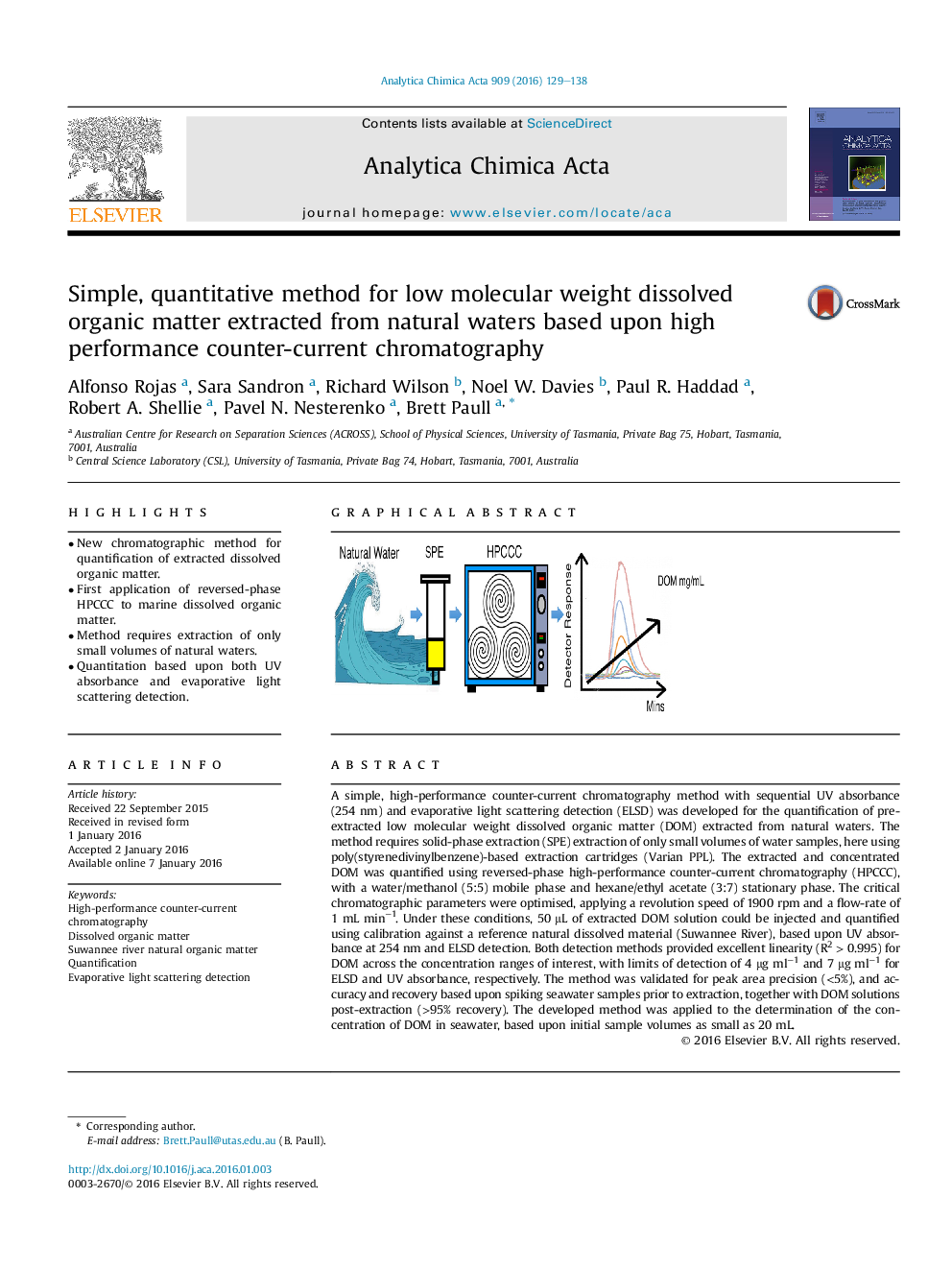| Article ID | Journal | Published Year | Pages | File Type |
|---|---|---|---|---|
| 1163096 | Analytica Chimica Acta | 2016 | 10 Pages |
•New chromatographic method for quantification of extracted dissolved organic matter.•First application of reversed-phase HPCCC to marine dissolved organic matter.•Method requires extraction of only small volumes of natural waters.•Quantitation based upon both UV absorbance and evaporative light scattering detection.
A simple, high-performance counter-current chromatography method with sequential UV absorbance (254 nm) and evaporative light scattering detection (ELSD) was developed for the quantification of pre-extracted low molecular weight dissolved organic matter (DOM) extracted from natural waters. The method requires solid-phase extraction (SPE) extraction of only small volumes of water samples, here using poly(styrenedivinylbenzene)-based extraction cartridges (Varian PPL). The extracted and concentrated DOM was quantified using reversed-phase high-performance counter-current chromatography (HPCCC), with a water/methanol (5:5) mobile phase and hexane/ethyl acetate (3:7) stationary phase. The critical chromatographic parameters were optimised, applying a revolution speed of 1900 rpm and a flow-rate of 1 mL min−1. Under these conditions, 50 μL of extracted DOM solution could be injected and quantified using calibration against a reference natural dissolved material (Suwannee River), based upon UV absorbance at 254 nm and ELSD detection. Both detection methods provided excellent linearity (R2 > 0.995) for DOM across the concentration ranges of interest, with limits of detection of 4 μg ml−1 and 7 μg ml−1 for ELSD and UV absorbance, respectively. The method was validated for peak area precision (<5%), and accuracy and recovery based upon spiking seawater samples prior to extraction, together with DOM solutions post-extraction (>95% recovery). The developed method was applied to the determination of the concentration of DOM in seawater, based upon initial sample volumes as small as 20 mL.
Graphical abstractFigure optionsDownload full-size imageDownload as PowerPoint slide
